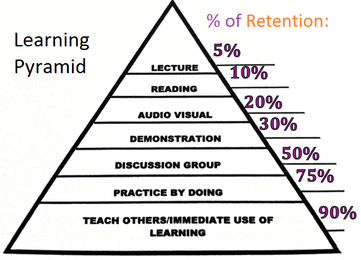How do I use this course?
|
The Alternative to Violence Course website is self-directed yet interactive. Starting with the study of a few sessions and then trying some applications can show how these strategies work. To choose sessions, click "personal guide" on the navigator or footer for a summary of conflict resolution techniques. Click "community, national and global guide" on the navigator or footer for group techniques. Learning from all twelve sessions is best for a holistic understanding of the principles of nonviolence. |
|
Sessions

Click for a larger image.
Various components help personalize and internalize learning for more thoughtful and effective use of nonviolent strategies.
Each session begins with a main point and opening question. The session components include video examples, audio readings of major articles, case studies, and charts and exercises. Optional assignments are provided for review and reflection.
Main point - This statement is the goal of the session to reflect on while moving through the material. (It tells the individual what to focus on and gives direction for group study.)
Opening question - To give your opinion at the beginning and to reevaluate your thoughts at the end of the session. (If studying individually, keeping an online journal of one's reactions can be helpful. If studying with a group, this opening question provides good discussion.)
Video Examples- Videos are used to explain important information in entertaining and memorable ways.* (Both individuals and groups improve retention from 20% to 30% with video demonstrations. Group discussion brings retention to 50%, as demonstrated by the Learning Pyramid.)
Readings- Original articles from Alternatives to Violence Workbook with audio give a background for understanding principles, strategies, and techniques of nonviolence. (This is another place for individual journal entries and for group study debates.) **
Cases- These are descriptions of actual situations, recent and historic with analysis at the end of each. Downloadable audio accompanies three or four cases in each session. (Individuals could journal more case analyses; groups could suggest alternative solutions.)
Charts and exercises- Some sessions will incorporate photo images and examples of charts which could be helpful in remembering session information. (Some are interactive and we ask that participants complete these when applicable. These charts provide another place for group discussion, which increases average retention to 50%.)
Optional assignments- At the end of each session, there are various types of optional activities. These include studying more cases, viewing relevant full length films, and social experiments. Participants will have their choice of activities and we suggest partaking in at least one assignment. The greater the participation the greater the results. Application provides 75% retention on the Learning Pyramid.
Each session begins with a main point and opening question. The session components include video examples, audio readings of major articles, case studies, and charts and exercises. Optional assignments are provided for review and reflection.
Main point - This statement is the goal of the session to reflect on while moving through the material. (It tells the individual what to focus on and gives direction for group study.)
Opening question - To give your opinion at the beginning and to reevaluate your thoughts at the end of the session. (If studying individually, keeping an online journal of one's reactions can be helpful. If studying with a group, this opening question provides good discussion.)
Video Examples- Videos are used to explain important information in entertaining and memorable ways.* (Both individuals and groups improve retention from 20% to 30% with video demonstrations. Group discussion brings retention to 50%, as demonstrated by the Learning Pyramid.)
Readings- Original articles from Alternatives to Violence Workbook with audio give a background for understanding principles, strategies, and techniques of nonviolence. (This is another place for individual journal entries and for group study debates.) **
Cases- These are descriptions of actual situations, recent and historic with analysis at the end of each. Downloadable audio accompanies three or four cases in each session. (Individuals could journal more case analyses; groups could suggest alternative solutions.)
Charts and exercises- Some sessions will incorporate photo images and examples of charts which could be helpful in remembering session information. (Some are interactive and we ask that participants complete these when applicable. These charts provide another place for group discussion, which increases average retention to 50%.)
Optional assignments- At the end of each session, there are various types of optional activities. These include studying more cases, viewing relevant full length films, and social experiments. Participants will have their choice of activities and we suggest partaking in at least one assignment. The greater the participation the greater the results. Application provides 75% retention on the Learning Pyramid.
Other Resources
Syllabus: Presents the goals and objectives for each of the twelve sessions.
Glossary: Removes ambiguity, the terms used in the course, as defined by the course.
Extra: Additional cases and suggested films for all sessions that can be further discussed in the Forum (below).
Glossary: Removes ambiguity, the terms used in the course, as defined by the course.
Extra: Additional cases and suggested films for all sessions that can be further discussed in the Forum (below).
Discussion Forum
The forum will help you learn more about the material and remember it better through sharing responses and reactions with other people. You can respond to whatever you wish; however, it is encouraged that participants respond to something for each session. What impacted you? What affected your feelings or changed your perceptions or attitudes? What did you observe, experience, and/or think? Prompts are associated to films, cases, and applications. Click the tab above on the navigation menu, or below in the footer.
Alternatives to Violence Blog
This is a resource for users during participation and after completion of the course. The blog contains current posts regarding the Alternatives to Violence materials. On the right hand side of the blog page, there is an option to "follow RSS feed". Receiving frequent information is a tool to stay active and cognizant about nonviolence in daily life. This is highly recommended. Click the tab above on the navigation menu, or below in the footer.
|
Danene Bender
Organizer of John Looney Internship Editor of Materials; Reader of Cases Maureen Farris John Looney Intern 2006 Reader of Online Short Articles and Charts Wayne Poteete Volunteer Support for John Looney Internship Proofreader and Proof Listener for Online Course |
Elizabeth Rose
John Looney Intern 2012 Website Designer, Alternatives to Violence Course Serena Hanna John Looney Intern 2009 Proofreader of Online Course Ellen Zielinski John Looney Intern 2003 Mentor to Future Plans of John Looney Internship |
Greg Coleridge
Program Director NE Ohio AFSC 1983-2017 Reader of Articles by John Looney Jeremiah Currier Volunteer Support for John Looney Internship Reader of Online Short Articles and Charts In Memory of Waring Smith 1916-1996 High School Classmate of John Looney Art Designer for ATV Course |
* Because our course uses videos from YouTube, related videos will appear following those suggested by the Alternatives to Violence Course. These related videos are not endorsed by our course.
** The excerpts are read aloud in videos in most sessions and the original articles can be downloaded. If any part is quoted please give credit to the Alternatives to Violence Workbook, 1995 and please refer to www.alternativestoviolencecourse.org.
** The excerpts are read aloud in videos in most sessions and the original articles can be downloaded. If any part is quoted please give credit to the Alternatives to Violence Workbook, 1995 and please refer to www.alternativestoviolencecourse.org.
Revised April 2015, July 2019

